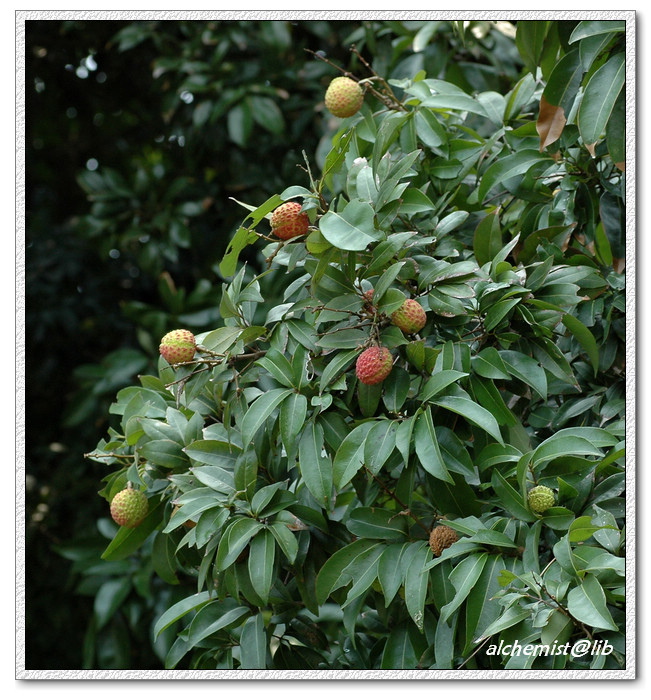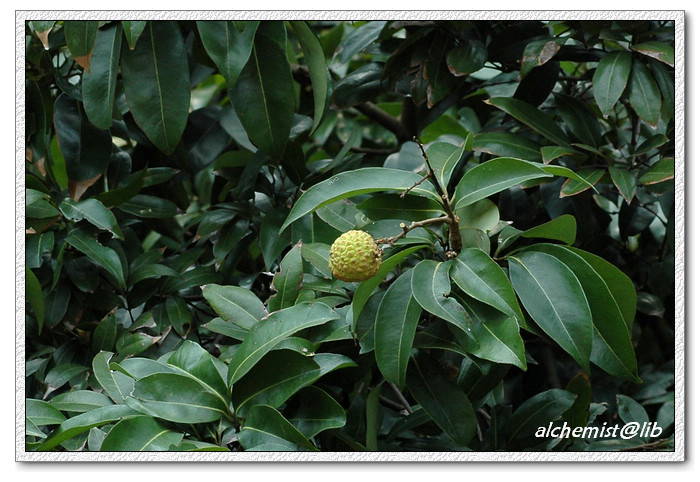荔枝 Litchi chinensis

- Scientific Name: Litchi chinensis Sonn.
- Ref: Voy. Indes Orient., ed. 2, 3:255. 1782
- Synonyms: Dimocarpus lichi Loureiro; Litchi chinensis var. euspontanea H. H. Hsue; Nephelium chinense (Sonnerat) Druce; N. lit-chi Cambessèdes; Scytalia chinensis (Sonnerat) Gaertner
- English Common Name: lychee, leechee, litchi
- Chinese Common Name: 荔枝/荔支 lìzhī, 离枝 lízhī
- Japanese Common Name: レイシ [茘枝] reishi
- Family: Sapindaceae
- Genus: Litchi
- Distribution: Native in SW Guangdong (Xuwen) and Hainan; widely cultivated in S China, especially in S Fujian and Guangdong [Laos, Malaysia, Myanmar, New Guinea, Philippines, Thailand, Vietnam; widely cultivated in subtropical regions].
- Photo: 06/21/2009, South China Botanical Garden, Guangdong
Trees, evergreen, often less than 10 m tall, sometimes to 15 m tall or more. Bark grayish black; branches brownish red, terete, with dense white lenticels. Leaves with petiole 10-25 cm or longer; leaflets 2 or 3(or 4) pairs; petiolules 7-8 mm; blades adaxially deep green and shiny, lanceolate or ovate-lanceolate, sometimes elliptic-lanceolate, 6-15 × 2-4 cm, thinly leathery or leathery, abaxially glaucous, glabrous, lateral veins often slender, conspicuous or slightly prominent abaxially, margin entire, apex cuspidate or shortly caudate-acuminate. Inflorescences terminal, large, many branched. Pedicels 2-4 mm, slender, sometimes short and stout. Calyx golden tomentose. Stamens 6 or 7, sometimes 8; filaments ca. 4 mm. Ovary densely tuberculous and hispid. Fruit usually dark red to fresh red when mature, globose to subglobose, 2-3.5 cm. Seeds thoroughly covered by fleshy arillode. Fl. spring, fr. summer. (Flora of China)

06/21/2009, South China Botanical Garden